5 Front-end Development Skills
5 Front-end Development Skills To become a successful front-end developer, you must master a set of essential skills. In this comprehensive blog, we’ll dive into the five key front-end development skills you need to land your first job and set yourself up for a rewarding career in web development.
The Fundamental Trio: HTML, CSS, and JavaScript in 5 Front-end Development Skills.
To start your journey as a front-end developer, you must first conquer the fundamental trio: HTML, CSS, and JavaScript. These three languages form the backbone of modern web development, and understanding their purpose and how to use them effectively is crucial.
HTML (Hypertext Markup Language) is the structure of a web page, defining the building blocks that make up the content. CSS (Cascading Style Sheets) is responsible for the visual styling and aesthetics, allowing you to control the appearance of your web pages. JavaScript, on the other hand, is the programming language that adds interactivity and dynamic functionality to your web applications.
Imagine a building as an analogy for a web page. The building’s skeleton or structure is like HTML, the walls, windows, and tiles are CSS, and the functionality, such as the elevator button, is JavaScript. You will have a strong base to work from when you master these three fundamental languages and develop interesting and approachable web experiences using the 5 front-end development skills.
1) Streamlining Development with Front-end Frameworks and Libraries
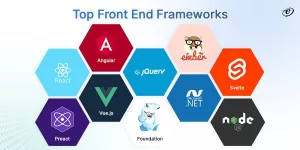
While HTML, CSS, and JavaScript form the fundamental building blocks, front-end development often involves repetitive tasks and boilerplate code. This is where front-end frameworks and libraries come into play. These tools provide pre-built code and functionality that can be easily integrated into your projects, helping you save time and increase development efficiency.
Some of the most popular front-end frameworks and libraries include React, Angular, and Vue.js. These tools don’t force your application into a specific structure but rather provide reusable components and features that can be customized to fit your needs. React, in particular, is widely used and has a large and active community, making it a great choice for beginners to start with 5 front-end development skills.
By leveraging these front-end frameworks and libraries, you can accelerate your development process and focus on building innovative and feature-rich web applications, rather than reinventing the wheel for every project.
2) Mastering Version Control with Git
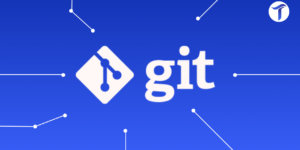
In the world of software development, version control systems are essential for tracking project history, collaborating with team members, and managing code changes. Git is the most widely used version control system, and it’s a skill that is highly valued by employers in the front-end development industry.
Git allows you to create, manage, and track changes to your codebase, making it easier to collaborate with others, revert to previous versions if needed, and maintain a clean and organized project history. Understanding how to use Git effectively, from basic commands to branching and merging, will make you a more attractive candidate for front-end development roles.
Familiarizing yourself with Git and its best practices will not only demonstrate your technical proficiency but also your ability to work in a team environment and contribute to larger, more complex projects.
3) Enhancing CSS with Preprocessors
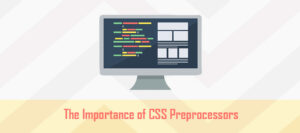
While CSS is a powerful language for styling web pages, it can become unwieldy and difficult to maintain as projects grow in size and complexity. This is where CSS preprocessors, such as Sass (Syntactically Awesome Style Sheets), come into play.
Preprocessors are tools that extend the capabilities of CSS, allowing you to write more modular, maintainable, and scalable styles. They introduce features like variables, mixins, and nested rules, which can greatly improve the organization and readability of your CSS codebase.
By learning a CSS preprocessor like Sass, you’ll be able to write more efficient and organized CSS, making it easier to update and maintain your front-end projects over time. This skill can set you apart from other candidates and demonstrate your attention to code quality and best practices.
4) Embracing Modern JavaScript with TypeScript
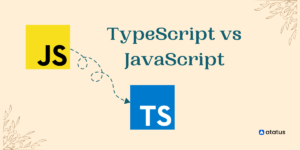
JavaScript, the primary language for front-end development, has evolved significantly over the years. While JavaScript is a powerful and versatile language, it can sometimes feel limited, especially when working on large-scale projects.
This is where TypeScript, a superset of JavaScript, comes into the picture. TypeScript adds static typing, improved tooling, and additional features to the JavaScript language, making it a more robust and scalable choice for modern front-end development.
By learning TypeScript, you’ll be able to write more maintainable and less error-prone code, as well as benefit from better tooling support, such as improved code completion and refactoring capabilities. Many front-end development teams have adopted TypeScript, making it a valuable skill to have in your arsenal.
5) The Learning Path: Mastering the Essentials
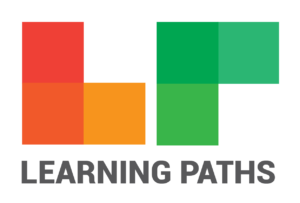
To become a proficient front-end developer and land your first job, you should focus on mastering the following skills:
- HTML, CSS, and JavaScript: Spend 3-5 hours per day studying and coding to develop a solid understanding of these fundamental languages within 3 months.
- Front-end Framework (React): Dedicate 1-2 months to learning a popular front-end framework, such as React.
- Version Control (Git): Familiarize yourself with Git and its basic commands in about 2 weeks.
- CSS Preprocessor (Sass): Spend 1-2 weeks learning a CSS preprocessor like Sass to enhance your CSS capabilities.
- Typed JavaScript (TypeScript): Allocate 2-4 weeks to learn TypeScript and its benefits over standard JavaScript.
Remember, the timeline is an estimate, and the actual time it takes to learn these skills may vary depending on your prior experience and dedication. The key is to stay focused, practice consistently, and don’t get discouraged. With determination and passion, you can achieve your goal of becoming a front-end developer.
CONCLUSION
FAQ: 5 Front-end Development Skills
What is the difference between a front-end framework and a library?
The main difference is that a framework, like Angular, forces your application into a specific structure, while a library, like React, provides reusable components and functionality without enforcing a rigid structure. Frameworks typically have more opinionated and standardized approaches, while libraries offer more flexibility.
Why is Sass (syntactically awesome style sheets) considered a valuable skill?
Sass is a popular CSS preprocessor that extends the capabilities of standard CSS. It introduces features like variables, mixins, and nested rules, which help you write more modular, maintainable, and scalable styles. By learning Sass, you can improve the organization and efficiency of your CSS codebase, making it a valuable skill for front-end developers.
How does TypeScript differ from JavaScript, and why is it beneficial to learn?
TypeScript is a superset of JavaScript that adds static typing, improved tooling, and additional features to the language. By using TypeScript, you can write more maintainable and less error-prone code, as well as benefit from better tooling support, such as improved code completion and refactoring capabilities. Many front-end development teams have adopted TypeScript, making it a valuable skill to have.
How long does it typically take to become proficient in front-end development?
The timeline for becoming proficient in front-end development can vary, but with consistent effort and dedication, you can become job-ready within 6 months. By focusing on the essential skills outlined in this blog and practicing regularly, you can develop a strong foundation and be well on your way to landing your first front-end development job.
What are the best resources to learn front-end development skills?
In addition to the video tutorials and courses mentioned in the video, there are many other excellent resources available online, such as free online courses, coding bootcamps, and developer communities. Platforms like Udemy, Coursera, and FreeCodeCamp offer comprehensive front-end development courses, while websites like MDN Web Docs and W3Schools provide detailed documentation and tutorials.
Follow https://www.digitalpluto.co.in/ for the latest updates about web development.





